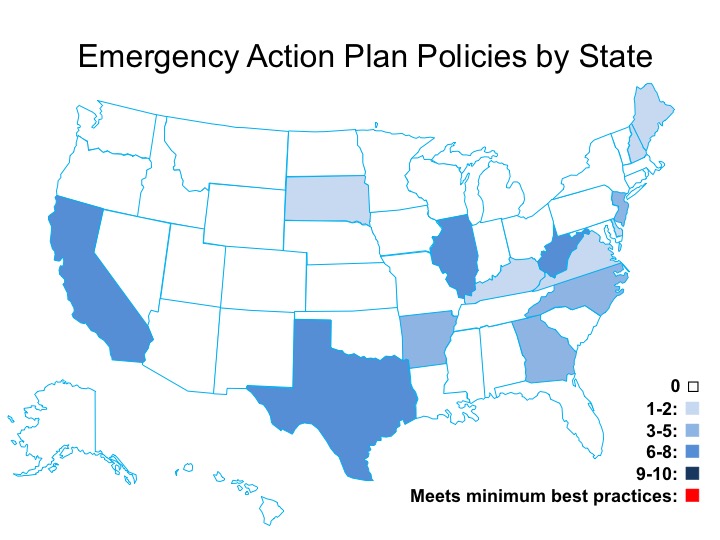Preparing for an emergency is the number one thing a school can do to ensure the safety of their athletes. Unfortunately we cannot predict the future enough to know the exact date, time, weather conditions and illness or injury that can threaten an athlete’s life. What we can do is prepare for an emergency situation by creating a thorough and practiced plan that can be implemented in many different areas of crisis.
Simply creating an emergency action plan or an EAP is not enough. Each school should practice their plan and rehearse annually so that it becomes second nature and efficient. The EAP should include all the appropriate personnel and be simple enough for someone to follow, but specific enough to be effective.
At the Korey Stringer Institute, we have established a series of recommended criteria to create and follow a successful EAP. A rapid controlled response is critical during a state of emergency. Developing and implementing an EAP, along with other criteria can be found in the NATA’s Position Statement on Emergency Planning in Athletics. States need to understand that failure to have and EAP can be considered negligence. More information can be found in the Inter-Assocaition Task-Force for Preventing Sudden Death in Secondary School Athletics Programs: Best Practice Recommendations.

The Korey Stringer Institute recommends the following policies:
- Every school or organization that sponsors athletics should develop an EAP for managing serious and/or potentially life-threatening injuries.
- The EAP should be developed and coordinated with local EMS, school public safety officials, on site medical personnel or school medical staff, and school administrators.
- Every school should have a written EAP document distributed to all staff members.
- The EAP should be specific to each venue and include maps and/or specific directions to that venue.
- On-site emergency equipment that may be needed in an emergency situation should be listed.
- The EAP should identify personnel and their responsibilities to carry out the plan of action with a designated chain of command.
- Appropriate contact information for EMS.
- Facility address, location, contact information etc. should be identified in the EAP.
- Plan should specify documentation actions that need to be taken post emergency.
- EAP should be reviewed and rehearsed annually by all parties involved.
- Healthcare professionals who will provide medical coverage during games, practices, or other events should be included.
If any of this information is incorrect, has changed, or should be updated, please contact KSI.
Anderson JC, Courson RW, Kleiner DM, McLoda TA. National Athletic Trainers’ Association Position Statement: Emergency Planning in Athletics. J Athl Train. 2002;37(1):99–104.